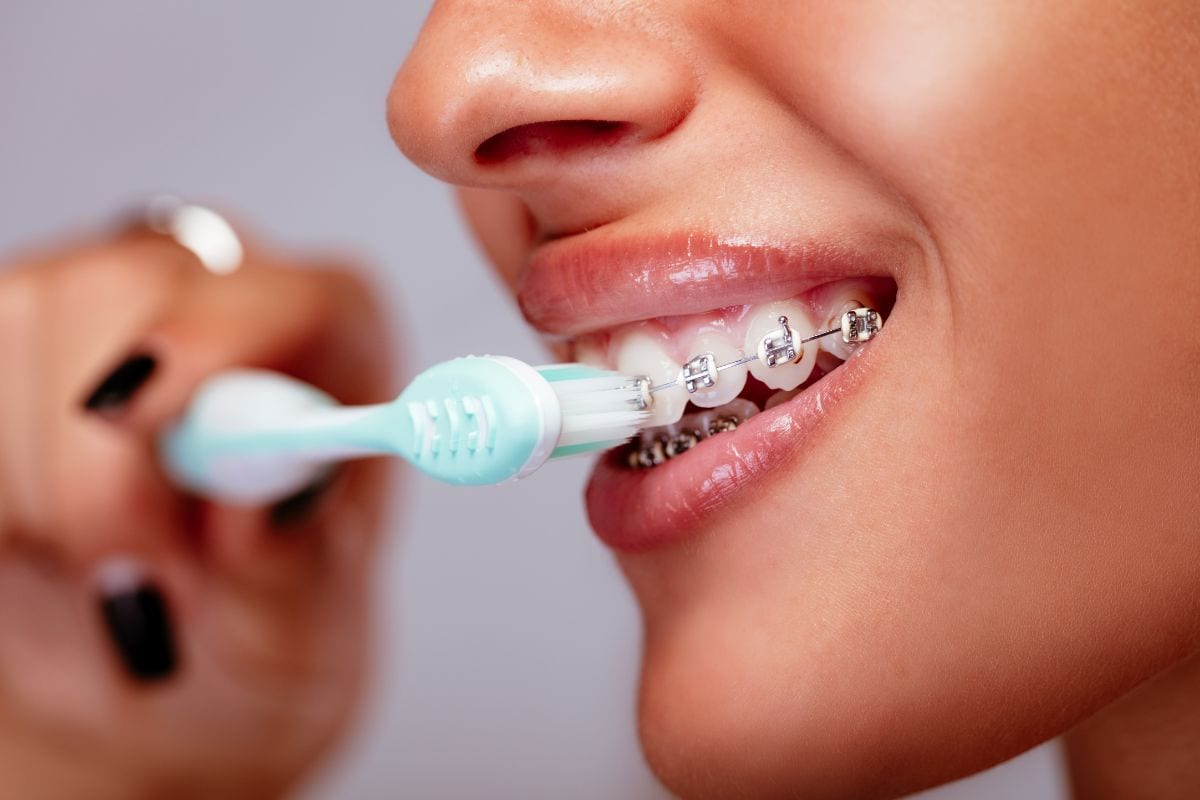If you wear braces, you know how important it is to maintain a good oral hygiene routine throughout the treatment process. The brackets and wires create small spaces that are perfect for trapping food particles and hiding bacteria, and it can be hard to clean all those areas effectively. This can lead to a build-up of plaque and the production of harmful acids that damage tooth enamel and cause other dental issues.
Our goal at New England Orthodontic Specialists is to give you a positive and stress-free experience from start to finish! We know how poor oral health can affect a patient’s treatment plan, from longer treatment times to unsatisfying results. In some severe cases, braces have had to be removed temporarily to resolve the problem before resuming orthodontic treatment. Follow our top tips for brushing while you’re in braces to keep your smile in shape!
Making the most out of brushing with braces
After Dr. Diana or Dr. Neil has placed your braces, your usual brushing technique will need some tweaking since you have brackets and wires to navigate now. Braces patients need to brush more often, too! We recommend brushing three to four times a day for at least two minutes each time to keep food debris and plaque from building up between your braces and teeth.
You don’t need to use any particular toothbrush with your braces, but you should choose one with soft bristles. Because manual toothbrushes can sometimes leave food particles and plaque behind no matter how thorough your brushing is, we also recommend that you use an electric toothbrush for the extra power it will provide.
There’s no specific toothpaste needed for brushing with braces, either, but we do recommend choosing one with fluoride. We also suggest using mouthwash daily to rinse around your brackets. Rinsing with an anti-cavity fluoride mouthwash for one minute will help flush out any debris that’s still trapped after brushing and flossing, reducing tooth decay and protecting the enamel. To get the most out of brushing, refer to the following guidelines.
- Take it easy on the toothpaste! Using too much can create excess foam, making it difficult to see any plaque and debris. A pea-sized amount should be sufficient.
- Hold the toothbrush against the front sides of the teeth, and move the toothbrush in small circular motions. Try to follow the regular curve of the gums and teeth as you go from tooth to tooth.
- Brush each tooth for several seconds, carefully and slowly, Make sure all food particles are reached and removed along the gum line, between the braces, and on the surface of each tooth.
- Take care to brush the biting surfaces of the teeth, the backsides of the teeth, and behind the molars.
- Don’t forget to brush the roof of your mouth and tongue before rinsing!
- To properly clean the brackets, angle the brush head against them, and remember to brush thoroughly under the wires as well.
Once you’re done, inspect your teeth and braces carefully to make sure they’re spotless. Take a look in a well-lighted mirror to see if you’ve missed anything, and check for any loose or broken brackets at this time as well. If you see something out of the ordinary, let us know! Your orthodontist will advise you on whether or not it needs to be checked out or repaired.
The best way to floss with braces
Flossing effectively is an essential part of oral care if you’re wearing braces, but it can be frustrating to get right even at the best of times! It may seem like you’ve brushed away every bit of food debris, but braces can easily trap tiny particles of it in places that are hard to see and reach. Fortunately, there are many products available to make this an easier process!
Floss threaders are a perfect example of this. This reusable tool has a stiff end that allows you to easily floss between the brackets and under the archwire. To ensure you’re flossing correctly with braces, try following these simple tips.
- Slide a piece of floss about 18 inches long under the wire, above the space between the two teeth. Insert the floss halfway through, and then hold both ends of the floss. Carefully slide the floss up and down a few times between the teeth. When the tooth is clean, you’ll be able to hear a slight squeaking sound.
- Floss the gum line with the floss in the shape of a “C” and below the gum line with a soft up and down motion. Be careful not to apply too much pressure when flossing around the archwire.
- Gently remove the floss, thread it under the next wire, and repeat the steps above.
It may take you a while to get through this process in the beginning, but it will become second nature in no time if you keep at it. A little effort will go a long way in this case, and your smile will thank you for it!
Keep your mouth healthy and happy with NEOS
As you can see, there’s an undeniable—and undeniably important!— connection between your oral health and getting a straighter smile. Following the guidelines we’ve listed above will keep your mouth in great shape while we work on giving you a better bite! If you have any questions or concerns about oral hygiene during treatment, our expert team is always here to help set your mind at ease. Get in touch with us today to schedule a FREE initial consultation or follow-up with Dr. Diana or Dr. Neil in our offices in Beverly, Topsfield, South Hamilton, or Salem.
